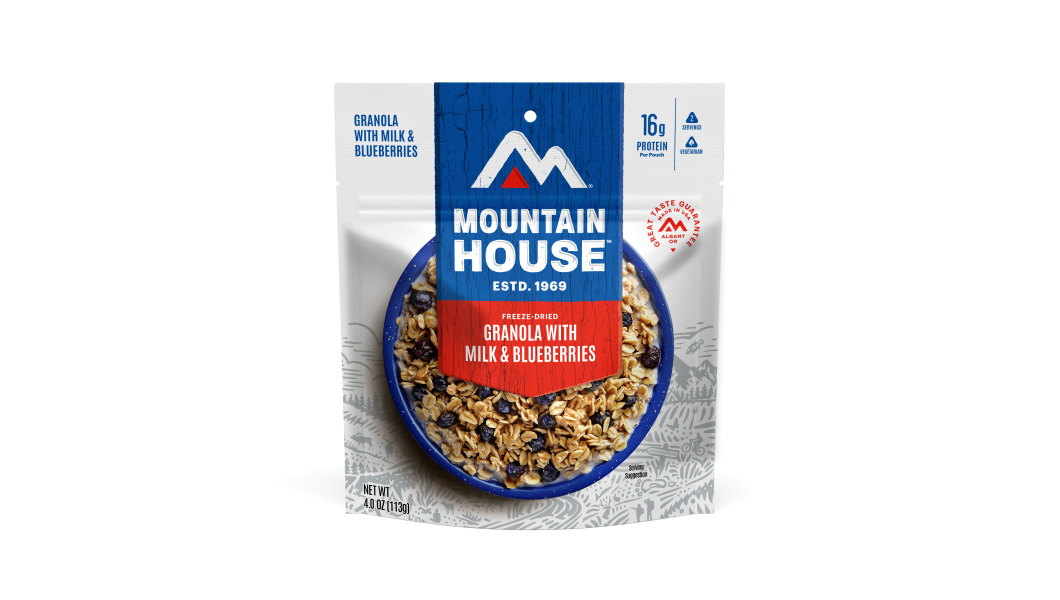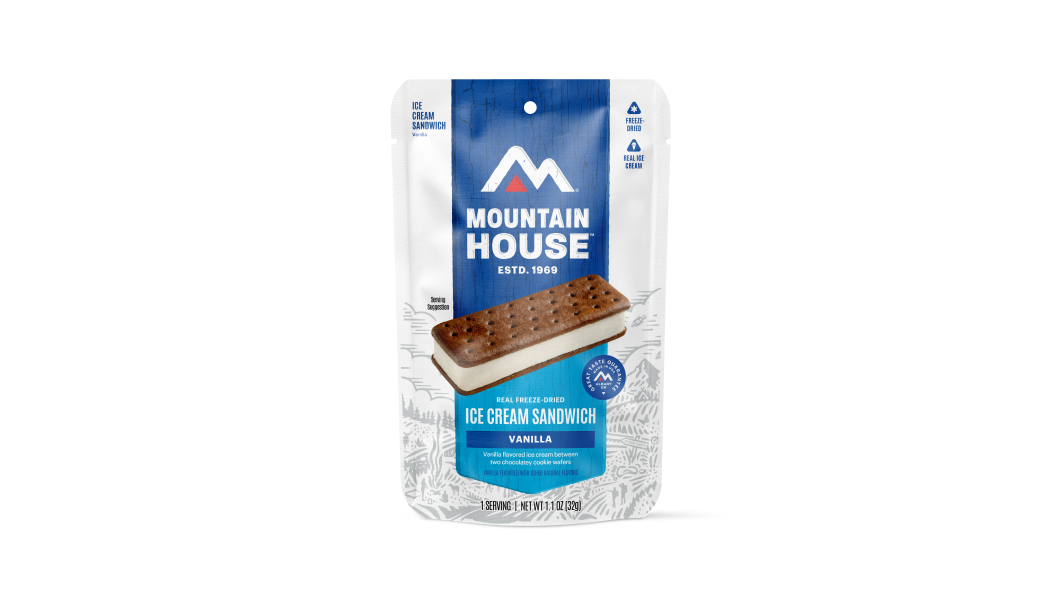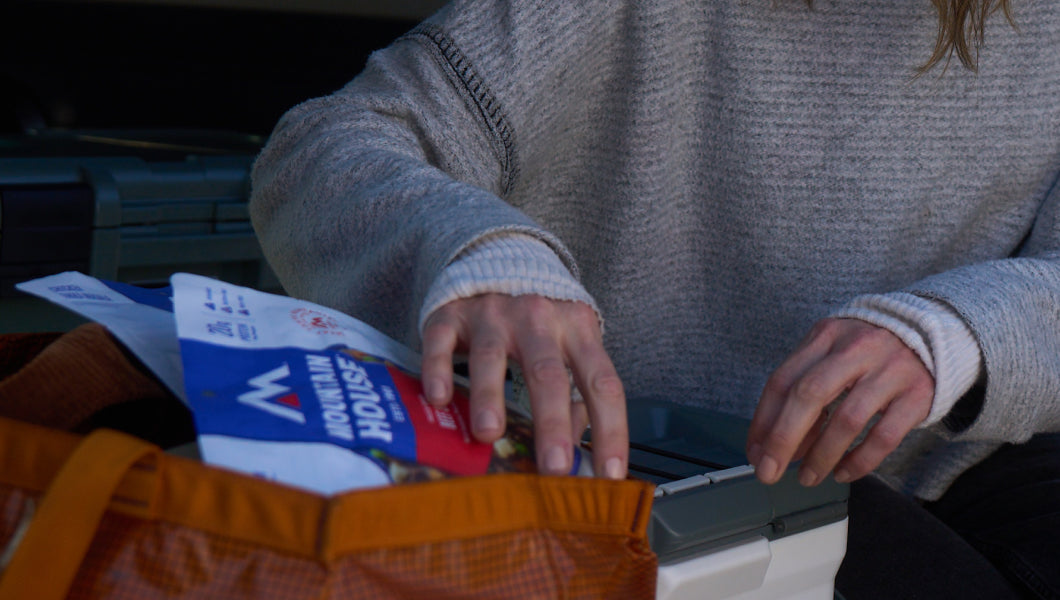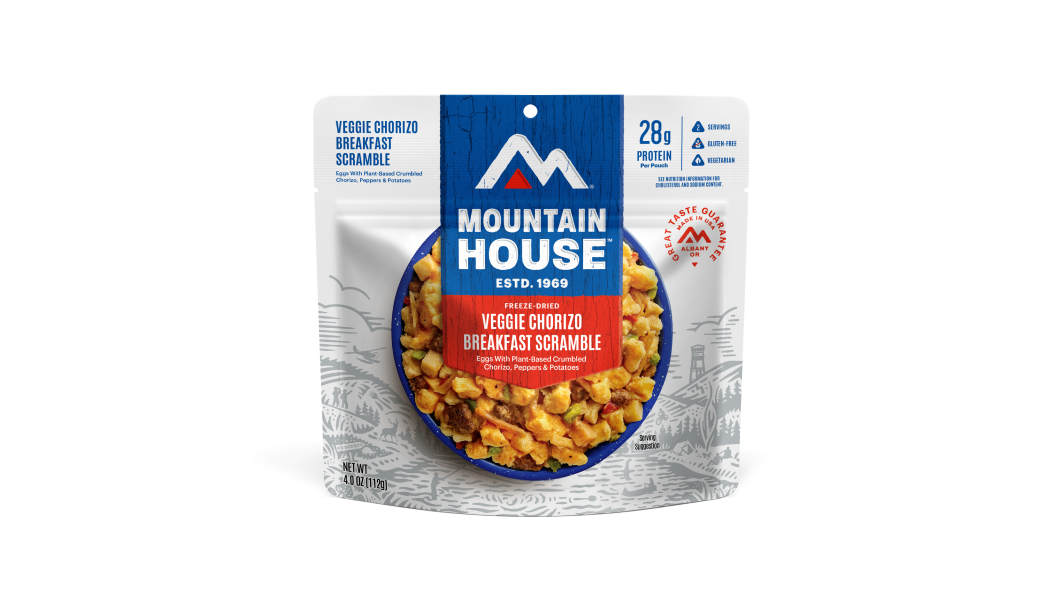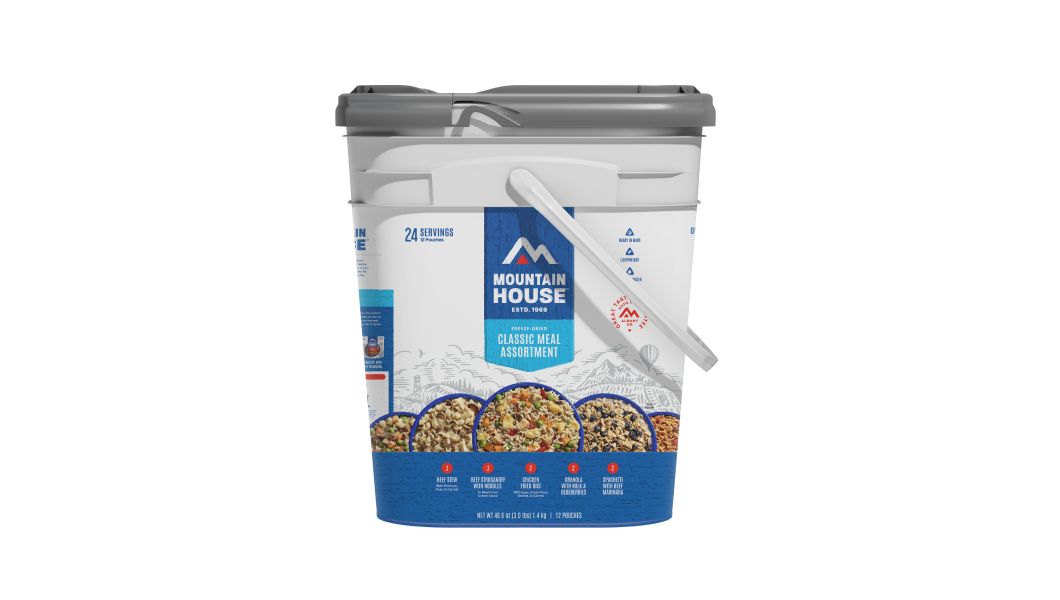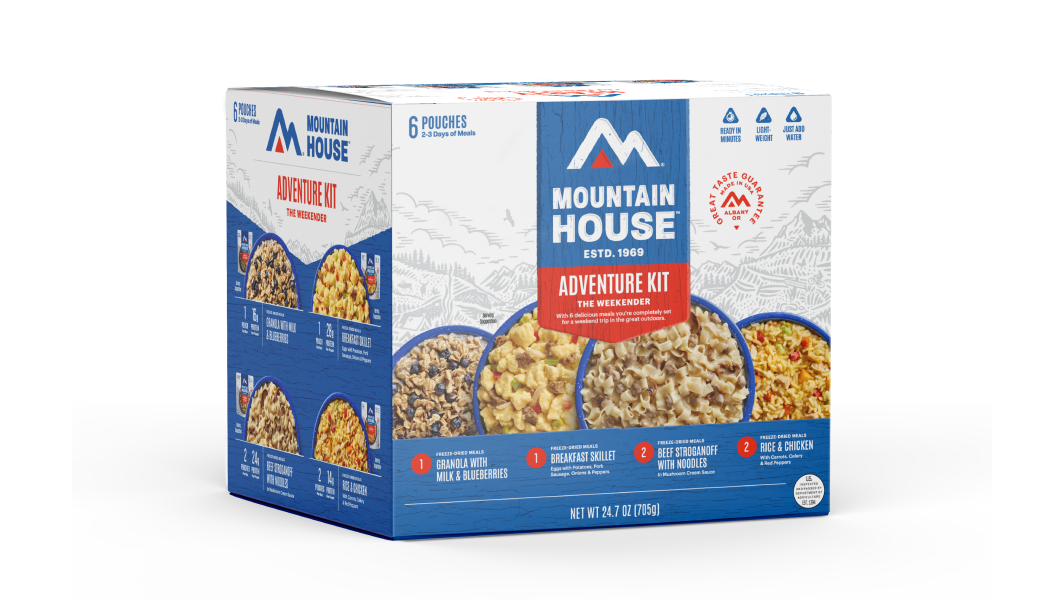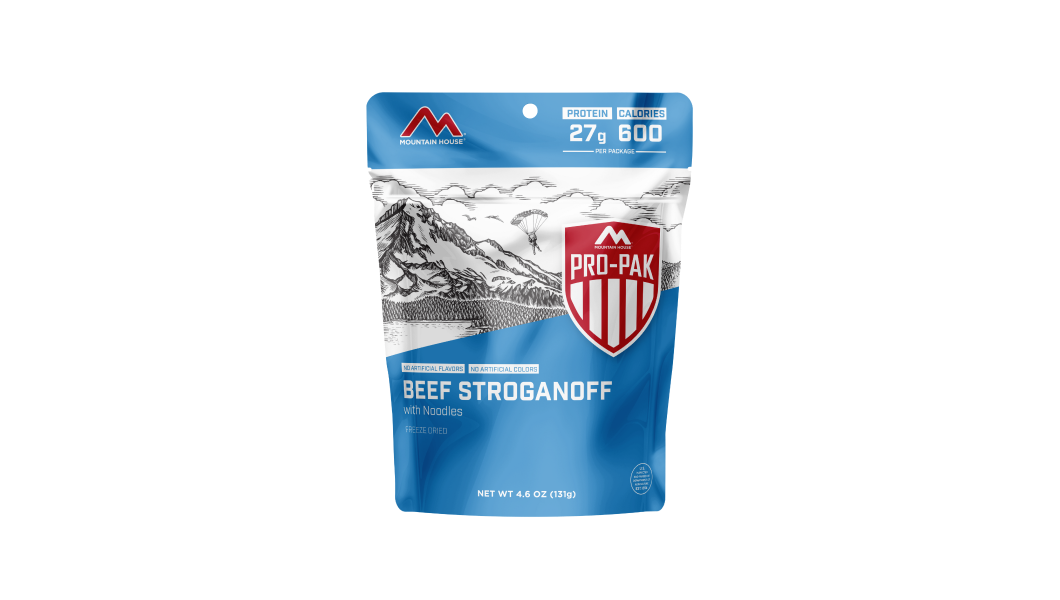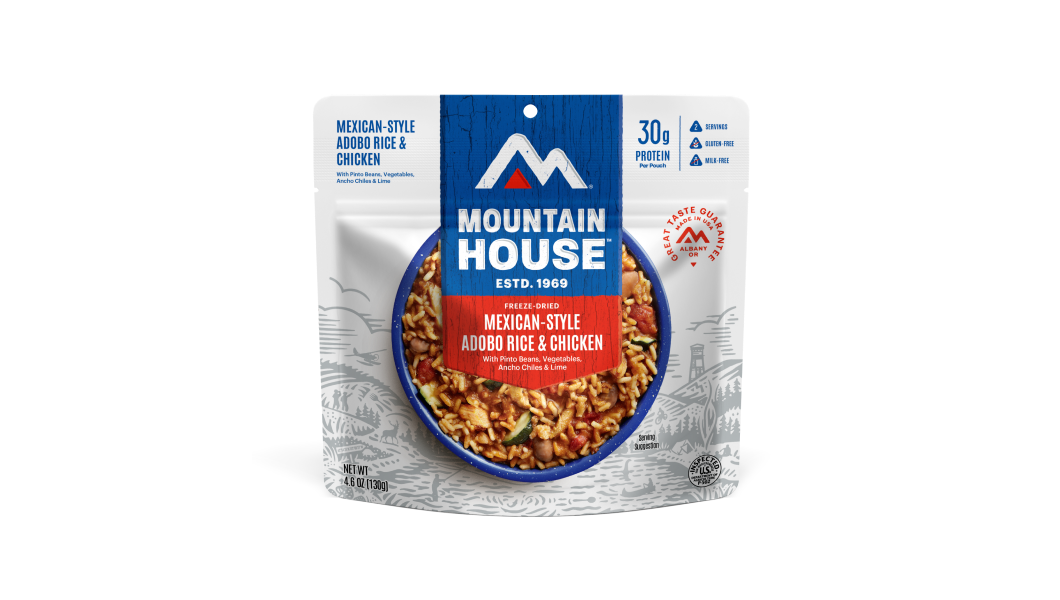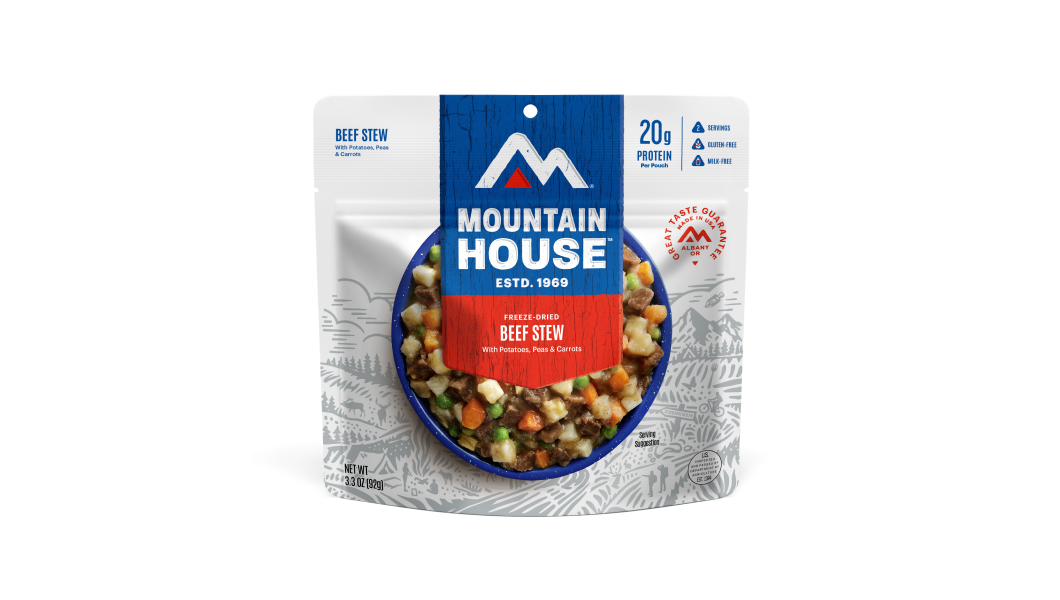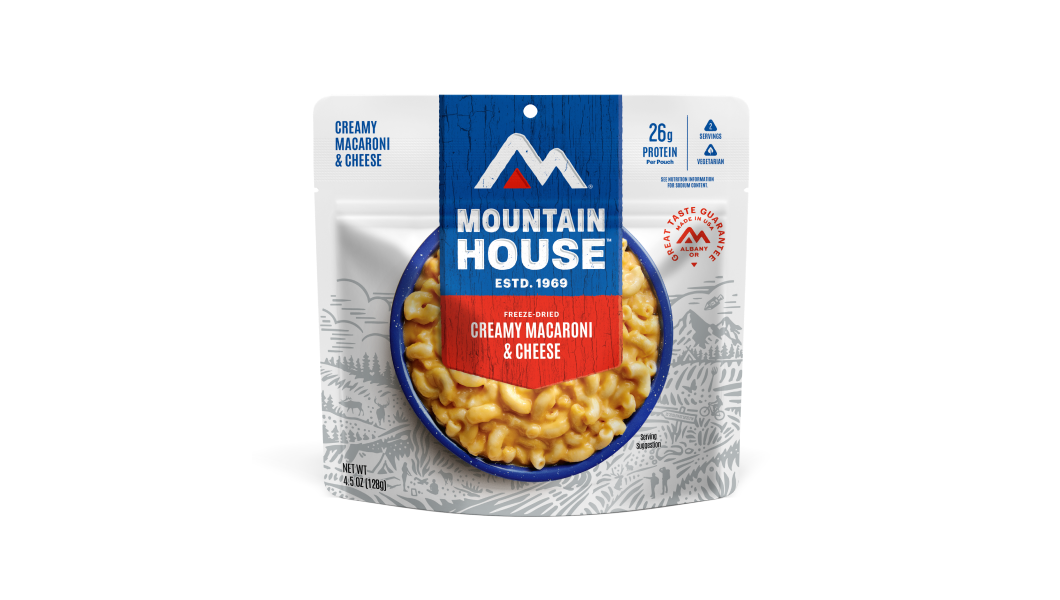Inspired for an Adventure? Check out Beef Stroganoff - Pouch and Beef Stew - Pouch
Free Ground Shipping On All Orders
Free Ground Shipping On All Orders
Add description, images, menus and links to your mega menu
A column with no settings can be used as a spacer
Link to your collections, sales and even external links
Add up to five columns
Add description, images, menus and links to your mega menu
A column with no settings can be used as a spacer
Link to your collections, sales and even external links
Add up to five columns


Being prepared for an emergency situation—whether it’s a pandemic, natural disaster, or extended power outage—is more important than ever. Emergency planning isn’t extreme. It's simply a smart way to protect yourself and your loved ones. What starts as a minor disruption can quickly escalate, and having a well-stocked food supply (along with clean water) is one of the most critical steps you can take toward self-reliance and resilience.
While a basic 72-hour food kit is a great starting point, experts recommend having at least two weeks’ worth of shelf-stable food items. Building a long-term food stockpile requires foods that are nutritious, compact, and built to last.
Some of the best survival foods include canned goods, freeze-dried meals, protein-packed staples, grains, legumes, nut butters, and specialty rations like MREs and emergency bars. Here’s a quick look at 20 top food supplies that every prepper—and anyone looking to be more prepared—should consider:
- Canned Vegetables
- Canned Fruits
- Canned Meats
- Canned Soups
- Mountain House Freeze-Dried Meals
- Freeze-Dried Fruits
- Freeze-Dried Vegetables
- Dehydrated Pasta and Rice
- Dehydrated Meat (like beef jerky)
- Dry Rice and Pasta
- Lentils
- Beans
- Oats
- Mountain House Freeze-Dried Meats
- Canned Tuna
- Beef Jerky
- Peanut Butter or Other Nut Butters
- Nuts and Seeds
- MREs (Meals Ready to Eat)
- Emergency Food Bars
We provide detailed information on each of these foods below.
Canned Goods
Canned foods are a great idea for your survival stockpile, given they're long-lasting, widely available, and can be eaten straight out of the can if need be. They typically offer a good balance of nutrients and variety.
- Canned Vegetables
- Canned Fruits
- Canned Meats
- Canned Soups
Freeze-Dried and Dehydrated Foods
It's ideal to have highly packable and lightweight non-perishable foods for your emergency kit, and certainly, freeze-dried and dehydrated foods and meals hit the mark. Both freeze-drying and dehydration remove moisture from foods to make them more shelf-stable as well as lighter, though the freeze-drying process—what we use in the form of a proprietary method here at Mountain House—extracts more moisture than the dehydration process. This makes freeze-dried foods not only lighter but also longer-lasting. Mountain House meals come with an impressive 30-year taste guarantee, making them one of the best emergency food options available.
Some foods, like dehydrated fruits or veggies, can be eaten as-is, while others require water and heat to reconstitute.
- Mountain House Freeze-Dried Meals
- Freeze-dried Fruits
- Freeze-dried Vegetables
- Dehydrated Pasta & Rice
- Dehydrated Meat
Grains and Legumes
Dried grains and legumes are nutrient-dense staples that offer a good source of carbohydrates (which your body converts into energy more readily than other foods), proteins, and fiber. They also form the base of many comfort-food dishes, which can be especially valuable in stressful situations.
- Rice
- Pasta
- Lentils
- Beans
- Oats
Protein Sources
Protein is another daily essential, especially important for keeping your energy up when you're weathering your way through an extended emergency or survival situation. Fortunately, you've got reliable options on this front as well. (And, mind you, the beans included in the above category are good protein sources, too.)
- Mountain House Freeze-Dried Meats in a #10 Can
- Canned Tuna
- Beef Jerky
- Peanut Butter or Other Nut Butters
- Nuts and Seeds
Specialty Survival Foods
You can also include some specially formulated, ready-to-eat survival fare in your emergency kit. Meals Ready-to-Eat (MREs) are one staple of the U.S. Military. Bear in mind, though, that they're not designed as a long-term diet (they're often high in sodium and low in fiber) and don't have an especially long shelf life.
It's worth noting that Mountain House has a long tradition (we're talking better than a half-century!) of supplying our freeze-dried products to the U.S. Armed Forces: a long-standing relationship and responsibility we're certainly honored to hold.
- MREs (Meals Ready to Eat)
- Emergency Food Bars
Long-Term Storage Tips
Stockpiling non-perishable provisions is a core part of being prepared, but it's only half the equation. If you don’t store and manage your food properly, it could spoil, attract pests, or even make you sick when you need it most. Here’s how to keep your emergency food supply safe, fresh, and ready for the long haul.
Proper Storage Conditions and Containers
As any prepper knows, long-term storage success for your provisions starts with the right environment and containers. The three rules to remember: keep it dry, cool, and dark.
- Choose your storage area wisely: Keep food away from direct sunlight and heat sources. A basement, pantry, or interior closet can work well, just make sure the space is clean and dry. Store food on high shelves to protect it from potential flooding.
- Use airtight, waterproof containers: Many dry goods come in cardboard boxes or thin plastic bags that are designed for short-term storage. Transfer these into screw-top jars or a different airtight container.
- Label and retain instructions: If you’re repackaging food that requires special preparation, write down the original instructions or cut them from the box and tape them to the container.
- Seal containers carefully: Don’t just close the lid and walk away. Make sure you’ve got a tight, secure seal. A compromised seal can invite moisture, air, or pests that ruin your supply.
- Inspect regularly: Even the best setups need occasional checks. Look for swollen or leaking cans, corroded lids, pest damage, and anything that smells, looks, or tastes “off.”
After a disaster (flood, earthquake, etc.), inspect everything. Discard any food that came into contact with floodwaters or shows signs of contamination.
Rotation and Expiration Date Monitoring
Long-term storage doesn’t mean “set it and forget it.” You must pay close attention to use-by or expiration dates and discard expired food containers or packages.
- Practice FIFO (First In, First Out): Store newer items behind older ones, so you naturally use the oldest (but still safe) products first.
- Create a tracking system: Maintain a detailed inventory list with product names, purchase dates, dates opened (if applicable), expiration or best-by dates, and current quantities (especially for opened goods).
- Follow FEMA storage guidelines: A few of the general guidelines they provide include: boxed powdered milk should be used within 6 months, dried fruit is best used within 6 months, canned goods should be used within 12 months or before their expiration date, and properly stored white rice, pasta, dried corn, and salt can last indefinitely.
Speaking of long-lasting foods, Mountain House products come with a 30-year Taste Guarantee, a shelf-life that’s hard to beat. After opening, it’s best to use the dry contents within a week. As we say in our FAQs, “After opening, we recommend using any dry contents within one week for best results and taste. After hydration, treat any leftover food as you would fresh food. It’s real food!”
Building a Well-Organized Emergency Food Pantry
Staying organized is key to making the most of your survival food supply. A well-planned storage system should be intuitive to use, easy to access, and built for rapid use if needed.
- Keep older items up front: This makes it easy to follow your FIFO system and prevents waste.
- Track opened containers: Add a column to your inventory list to track how much is left in any opened jars, buckets, or Mylar bags.
- Plan meals in advance: Prepare for extended emergencies, such as power outages, by making a day-by-day list of when specific food items in your survival stockpile should be used, and include (if applicable) how much water and other ingredients are needed for each meal.
- Separate ready-to-eat vs. cooking-required items: Separate foods that require water and cooking from those of the ready-to-eat variety, and specially label genuine survival provisions so that they're left for the most dire or extreme circumstances.
Nutritional Considerations
As mentioned earlier, long-term emergency food planning needs to go beyond just keeping hunger at bay. After a few days in, your body is really going to need its essential daily allotments of carbs, proteins, fats, amino acids, and the like, so be sure your emergency kit includes plenty of well-balanced meals and foods with high nutritional value.
Your supply should include a well-balanced mix of:
- Carbohydrates for high energy
- Proteins for muscle repair and strength
- Fats for long-term fuel and nutrient absorption
- Vitamins and minerals to support immune health and overall function
- Amino acids to maintain muscle and support recovery
Bear in mind, too, that in certain survival situations—just as in backpacking, climbing, and other outdoor recreation—you may be expending more calories on a daily basis than you normally do. So plan your long-term survival pantry with those potential caloric demands along with balanced nutrition in mind.Aim to have at least 2,000 to 2,500 calories per person per day in your long-term stockpile, adjusting for activity level and personal needs.
Don’t forget to include vitamin, protein, and mineral supplements to your stash as well to fill any gaps.
Dietary Restrictions & Allergies
If your household includes folks with food allergies or dietary restrictions, you must make sure your stockpile of emergency meals and ingredients takes these special needs into account. Fortunately, there are many non-perishable foods available on the market (including certain Mountain House products) that don't contain common allergens, such as peanuts, tree nuts, soy, and milk, and certainly dairy-free, gluten-free, vegetarian, and low-sodium options.
Somebody with food allergies shouldn't rely on emergency food products they've never had before, in case they end up having a reaction to them.
It's not a bad idea to store extra amounts of food items for these individuals in case of a major or significantly extended natural disaster situation where utilizing emergency shelters may be needed. Such facilities may or may not have foods appropriate for people with particular allergies or dietary needs, or at least not be able to procure them right away.
Budget-Friendly Emergency Food Planning
Building a solid survival food stockpile doesn’t have to drain your wallet. With a little planning and strategy, you can create a well-rounded emergency pantry on a budget.
You don’t need to buy everything at once, unless you're preparing for an immediate threat like a severe storm or natural disaster. Instead, start with a clear list of what you need, then work through it gradually. Add a few items to your emergency stash each week during regular grocery store runs. This approach helps spread out the cost while keeping you on track.
Buying in bulk is another smart move. Large quantities of staples like rice, beans, oats, and pasta are often cheaper per serving, and they store well when properly sealed. You can also get great value from multi-day emergency food kits.
At Mountain House, we offer a variety of emergency food kits to suit every level of preparedness and budget, from three-day supply kits to a one-year meal supply. For a fast and convenient way to meet the recommended two-week food supply, our 14-Day kit is a perfect choice.
Many People Trust Mountain House for Their Long-Term Survival Food Supply
Mountain House meals are a smart choice for emergency preparedness. They’re lightweight, easy to store, and packed with real ingredients and balanced nutrition. With a 30-year shelf life, fast prep time, and great taste, they’re ideal for everything from natural disasters to long-term survival planning.
Ready to stock up? Explore our emergency and survival kits and pouches to start building your reliable, long-lasting food supply today. You can even customize your own emergency food kit to match your flavor preferences and dietary needs.

How to Get Kids Involved in Family Emergency & Survival Planning
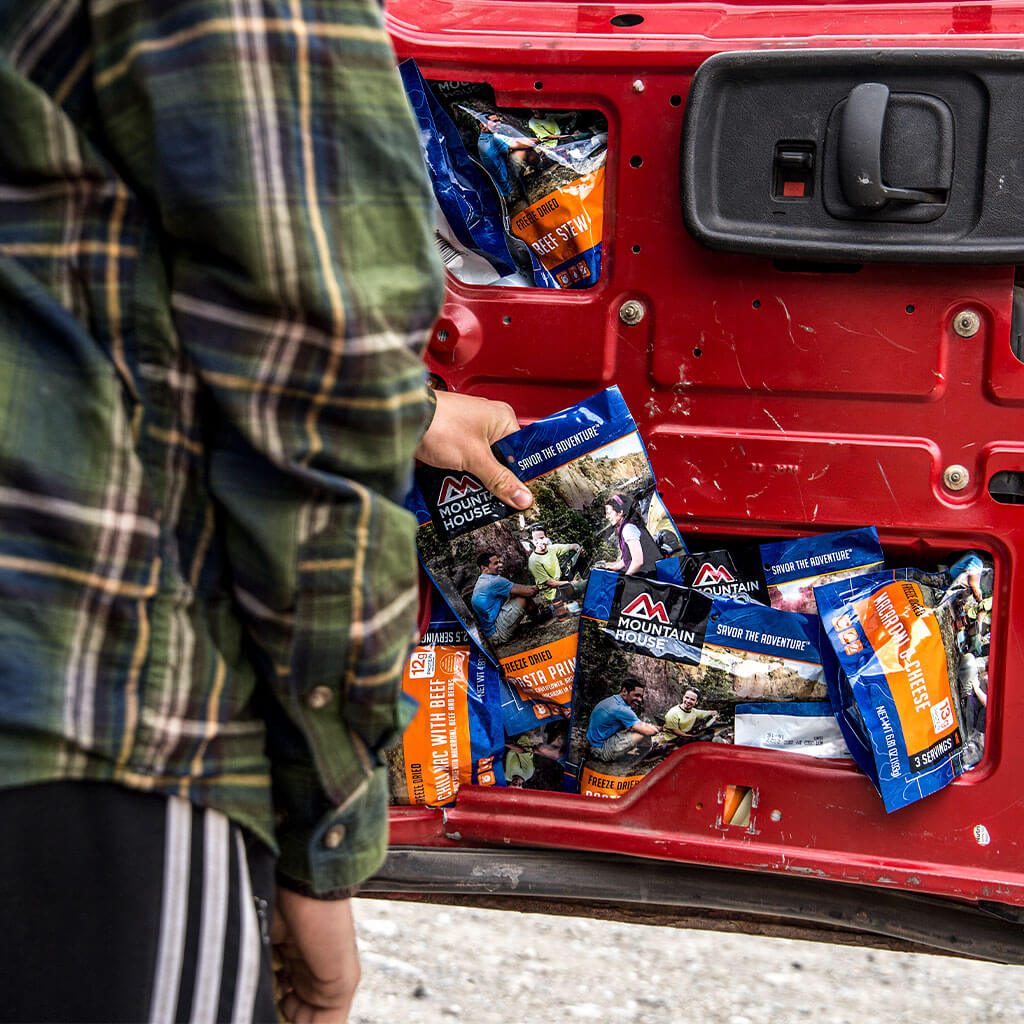
Bug Out Bag List of Essentials: Tips from Expert Preppers


Stay Hungry for Adventure
Sign Up for Delicious Outdoor Meals & Exclusive Offers!
By clicking ‘Join Now’, I agree to the Terms of Service and Privacy Policy.


Join the adventure
©2024 Mountain House — All Rights Reserved.
Your Cart is Empty
Continue ShoppingYour Cart
Subtotal
$0.00
EXPRESS PAYMENT METHODS AVAILABLE IN CHECKOUT
Taxes and Shipping Calculated at Checkout
